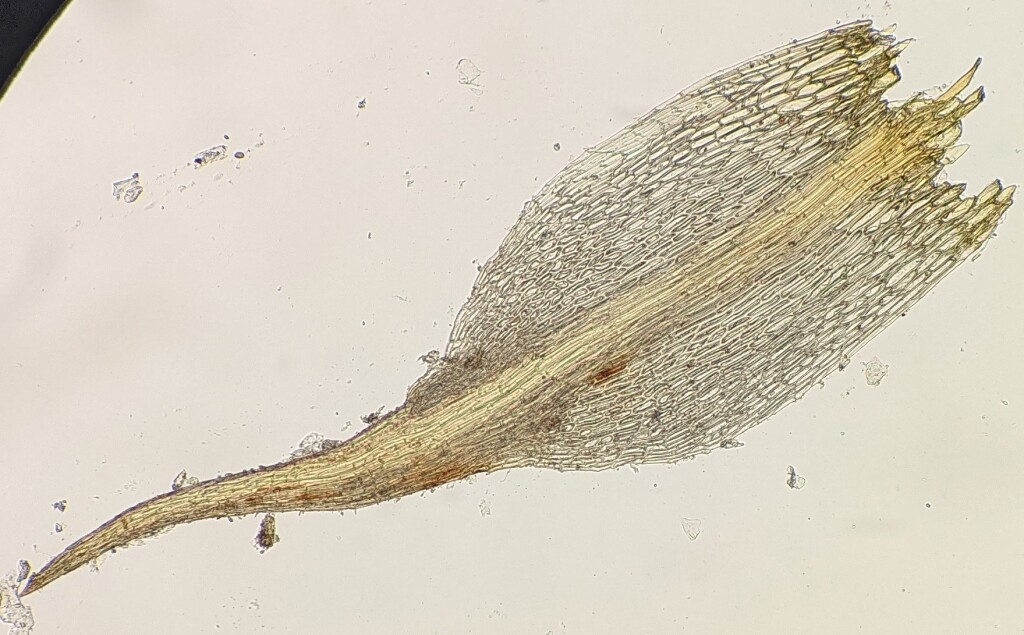Archidiaceae
Autoicous, paroicous (not in Victoria) or synoicous (not in Victoria). Asexual reproduction by rhizoidal tubers. Plants annual or perennial, gregarious or scattered on soil or thin soil crusts over rock, sometimes with a persistent thallose protonema attached to rhizoids (not in Victoria). Stems erect or prostrate, frequently branched by sterile and fertile innovations; central strand present. Leaves becoming larger toward stem apex, erect or spreading, scarcely altered when dry; apex obtuse, acute, acuminate (not in Victoria) or subulate (not in Victoria); costa subpercurrent to excurrent, rarely absent (not in Victoria) or failing in mid-leaf (not in Victoria); margin entire to cristate-denticulate, plane, incurved or recurved (not in Victoria), without a border; laminal cells quadrate, hexagonal, rectangular or rhomboidal, smooth; alar cells often differentiated and shorter and hyaline. Perichaetial leaves mostly larger than vegetative leaves, sheathing. Acrocarpous. Seta absent. Capsule globose, not apiculate, erect, immersed, sessile on a bulbous foout, cleistocarpous, without a columella. Calyptra minute, early caducous, occasionally present as a thin membrane at capsule apex. Spores 4–70 per capsule, rarely up to 178 (not in Victoria), large, globular to polyhedral, 50–300 μm long.
One genus, Archidium, with around 35 species distributed throughout the world except Antarctica, but most diverse in Africa and Australia; two species in Victoria.
The Archidiaceae are distinguished by their distinctive sporophytes that comprise sessile cleistocarpous globose capsules without an apiculus or a columella that usually contain few large spores (Snider 1975a, b; Stone 2006). This unique sporophyte morphology and development made assessment of their relationship to other moss groups difficult. Phylogenetic analyses of chloroplast DNA sequences have revealed that Archidiaceae belongs to the subclass Dicranidae and are derived from a haplolepidous (single peristome series formed from parts of cell walls) ancestor (Hedderson et al. 2004).
 Spinning
SpinningHedderson, T.A.; Murray, D.J.; Cox, C.J.; Nowell, T.L. (2004). Phylogenetic relationships of haplolepideous mosses (Dicranidae) inferred from rps4 gene sequences. Systematic Botany 29: 29–41.
Snider, J.A. (1975a). Sporophyte development in the genus Archidium (Musci). *Journal of the Hattori Botanical Laboratory * 39: 85–104.
Snider, J.A. (1975b). A revision of the genus Archidium (Musci). Journal of the Hattori Botanical Laboratory 39: 105–201.
Stone, I.G. (2006). Archidiaceae, in McCarthy, P.M. (ED.), Flora of Australia. Vol. 51 Mosses 1, pp. 146–147. ABRS, Canberra.



